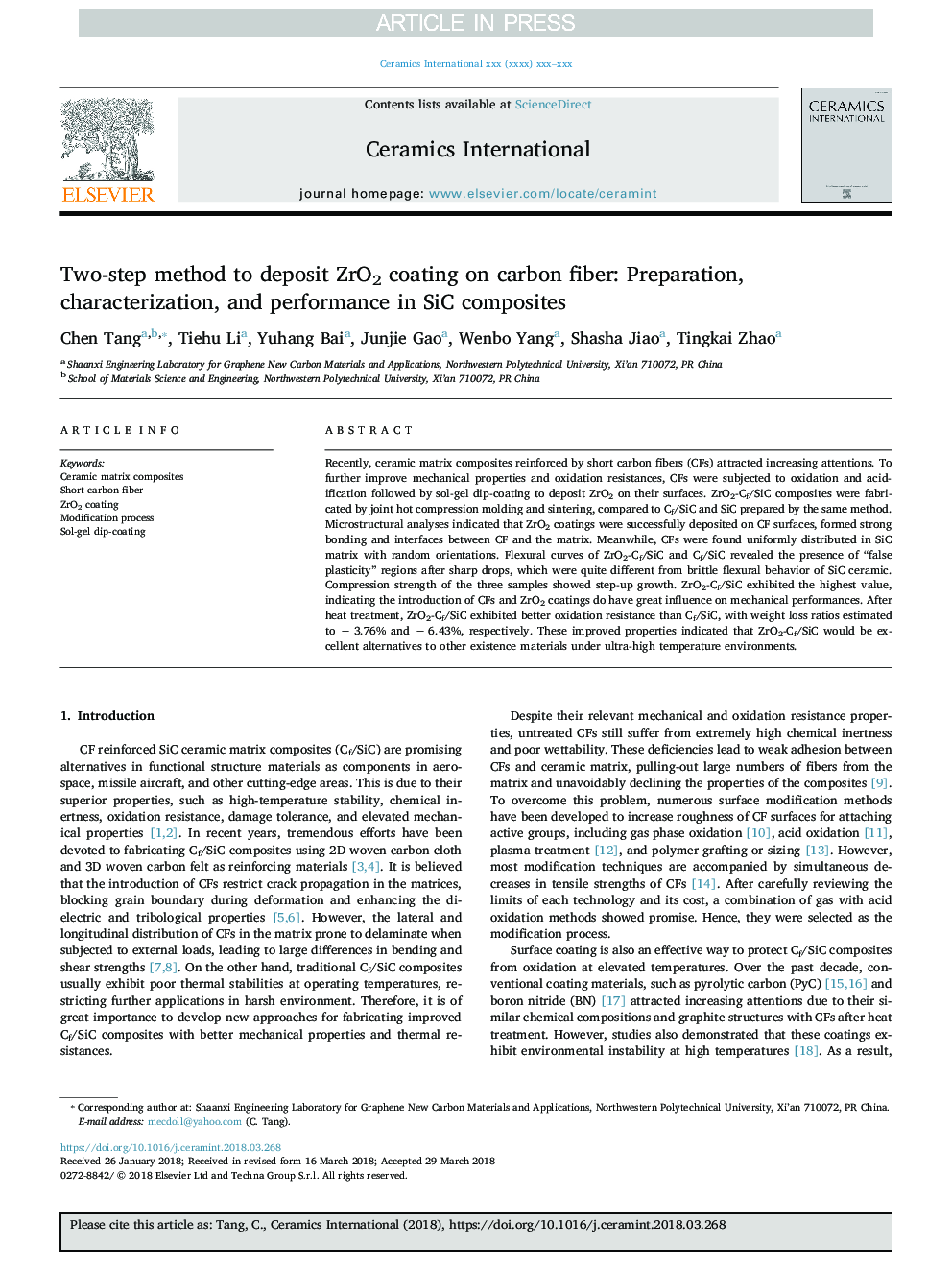| Article ID | Journal | Published Year | Pages | File Type |
|---|---|---|---|---|
| 7887332 | Ceramics International | 2018 | 8 Pages |
Abstract
Recently, ceramic matrix composites reinforced by short carbon fibers (CFs) attracted increasing attentions. To further improve mechanical properties and oxidation resistances, CFs were subjected to oxidation and acidification followed by sol-gel dip-coating to deposit ZrO2 on their surfaces. ZrO2-Cf/SiC composites were fabricated by joint hot compression molding and sintering, compared to Cf/SiC and SiC prepared by the same method. Microstructural analyses indicated that ZrO2 coatings were successfully deposited on CF surfaces, formed strong bonding and interfaces between CF and the matrix. Meanwhile, CFs were found uniformly distributed in SiC matrix with random orientations. Flexural curves of ZrO2-Cf/SiC and Cf/SiC revealed the presence of “false plasticity” regions after sharp drops, which were quite different from brittle flexural behavior of SiC ceramic. Compression strength of the three samples showed step-up growth. ZrO2-Cf/SiC exhibited the highest value, indicating the introduction of CFs and ZrO2 coatings do have great influence on mechanical performances. After heat treatment, ZrO2-Cf/SiC exhibited better oxidation resistance than Cf/SiC, with weight loss ratios estimated to ââ¯3.76% and ââ¯6.43%, respectively. These improved properties indicated that ZrO2-Cf/SiC would be excellent alternatives to other existence materials under ultra-high temperature environments.
Related Topics
Physical Sciences and Engineering
Materials Science
Ceramics and Composites
Authors
Chen Tang, Tiehu Li, Yuhang Bai, Junjie Gao, Wenbo Yang, Shasha Jiao, Tingkai Zhao,
